Fully exposed: Sam Roddick recreates secret nudes
19 March 2015
Italian architect Carlo Mollino had a dirty little secret. He spent the 1960s taking nude photographs of dancers and prostitutes. His shots have been meticulously recreated by Sam Roddick, as the inspiration for her debut photography exhibition, Hidden Within. BIDISHA asks Roddick about what compelled her to enter Mollino's "theatre of sexuality".
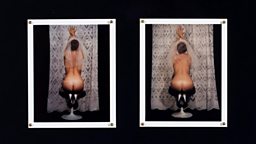
Sam Roddick photographs naked ladies. The artist, activist and daughter of Body Shop founder Anita Roddick shows me how she has posed women in carefully chosen scanties, shot beautifully on warm-toned film stock.
“The women’s poses are so directed, it was like running a Pilates class,” Roddick says. “I had to walk them through the process of shifting to the left, pulling in the stomach, sculpting their bodies so tightly that they had no say at all.”

The apparently casual sexualised images are the result of “being contorted in this very unflattering, inconsiderate way.”
The shots are part of Roddick’s first art exhibition, Hidden Within - inspired by the secret photographs of prostitutes and dancers by Italian architect Carlo Mollino. Roddick discovered his work while sourcing items for her posh Covent Garden sex boutique, Coco de Mer, which stocked everything from silk underwear to Tom Dixon designed vibrators.
“I feel sad about Mollino and call him my favourite historical pervert,” she says. “I’m intrigued by something in him that I feel is psychologically wrong.
“But he’s also an archetype of the sexually wounded male: sexually dissociated, deeply insecure, creating an ideal that had no basis in reality. These photographs are a sign of the theatre of his sexuality.
“He only made love in a blue room with a blue light. From the bathroom to the bedroom there was a long hall and the lighting would change from black to natural as the women approached, so they looked like a developing photographic image.
“He is the perfect example of the objectification and fetishisation of women.”
When she sold Coco de Mer in 2011 Roddick returned to her long-time hobby of photography. Intrigued by Mollino’s project, she set about meticulously replicating his shots and poses, discovering just how obsessive and controlling he had been in creating the imagery.
At first, I am disturbed by a woman artist who does this to other women, faithfully reproducing a man’s work, internalising his view of women and serving up yet more exposed, dehumanised pieces of meat to be looked at.
But Roddick argues she did this to try and understand his thought process: “I wanted to eradicate the personalities of the women so they lost their individuality. The whole project is about objectification and I don’t hide from that.
“I’m not trying to create something non-misogynistic. I’m trying to create something about misogyny. I’m questioning our cultural relationship with sex.
“It’s sinister and fractured and unhappy and lonely, dissociated. This is a really unhealthy way to view women. Objectification is the process of dehumanisation, and that is the default position of sexuality.”
Although she has carefully replicated Mollino’s poses, costumes and lighting, one big difference is in the non-coerced relationship between Roddick and her sitters:
“The models are my friends,” she says. “I wanted them to be of a certain character: independent. Strong, but a little bit vulnerable at the same time. They span twenty years and four dress sizes. They’re women I admire.”
Hidden Within is Roddick’s debut exhibition. Despite her privilege it’s been a hard, sometimes rackety climb to get to this position.

Dyslexic at a time when it was little understood, Roddick left school at 16. “My teacher fired me because she said I was confusing her,” she says dryly. “They sent me a letter saying I didn’t need to come back next term.”
There followed several years of diverse life experience which included an apprenticeship with a fine artist who was inspired by religious iconography, a stint as a lecturer on corporate responsibility, activism on behalf of indigenous people in Brazil and a trip down the Amazon.
Roddick glows when she mentions these adventures, recalling how “the youth shone from my passion” when she lectured. However, the British media was more cynical.
“The press didn’t want to talk about the issue,” she says. “They wanted to talk about Anita Roddick’s daughter going to the Amazon – and I found that quite shattering because I didn’t want that to be my value.”
The next phase of her life was dominated by her boutique. “I started Coco de Mer as a 30 year old and sold it as a 40 year old, when I felt I’d lost that bravado-esque concept of sexual liberation. I didn’t want to oversell the vibrator when people didn’t even know how to masturbate.
“We’ve over-commodified sex – and given it no value at the same time. There’s the idea that you’re only worth something if you have a sexual life, but worthless if you have too much of a sexual life.
“There are young girls being taught that they have a sexual value which is the only thing that matters.”
Hidden Within has been Roddick’s opportunity to replicate and thereby – she says – examine the processes by which women are turned into sexual objects.
The images are presented in dazzlingly beautiful embellished surrounds and highly worked ornate frames so that they resemble church altarpieces, with intricate embroidery by the famed English company Hand & Lock.
Every image in the frame links symbolically to the iconography of women and sexuality, referencing everything from ancient Sumerian laws on prostitution to Indian goddesses to genetic research.
Together they demonstrate the very narrow parameters by which women are allowed to be represented: as sexual objects who can be rented and used, dressed up and discarded; as archetypal Mother Goddesses or natural forces; or as desexualised and untouchable figures of religious idealisation.
This panoply of images, references, folklore and sexuality suits a woman whose professional history and personal convictions are both ethical and esoteric, spiked with waywardness.
Before her ignominious departure from school, her art teacher told her, “Sam, you’re going to be an artist. But you’re never going to art school.” “That’s reminded me,” Roddick grins, “I should invite him to the opening.”
Hidden Within is at the Michael Hoppen Gallery from 20 March to 1 May 2015
Carlo Mollino's hidden project
In the last thirteen years of his life, from 1960 to 1973, Italian designer and architect Carlo Mollino dressed up (or rather, stripped) and photographed go-go dancers and prostitutes from clubs and brothels around Turin.
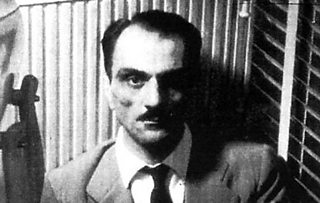
He put the women in clothes he had chosen for them, making them pose naked or partially exposed and shared the images with friends. Some of the women he used hadn’t known they were going to be photographed.
Mollino hid the photographs but they were eventually unearthed and published in a coffee table book, which Sam Roddick discovered when she was sourcing items for her Coco de Mer boutique.
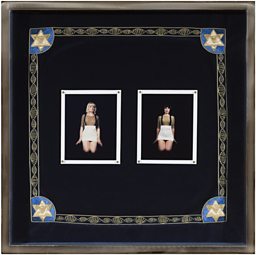
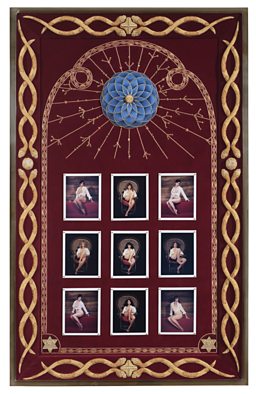
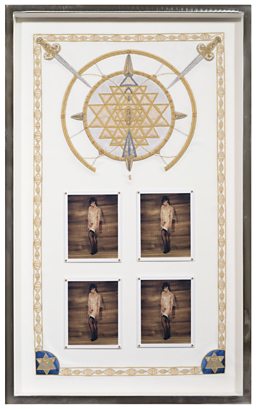

Find out more
More photography from BBC Arts
-
![]()
War and peace
The compassionate photography of Don McCullin.
-
![]()
Childhood in the 1970s
Tish Murtha’s tender photos of deprivation in Britain.
-
![]()
Neon dreamland
Liam Wong's sci-fi-style images of Tokyo at night.
-
![]()
Pup art
William Wegman's Polaroids of his loyal Weimaraners.
-
![]()
Stanley Kubrick
1940s New York through the lens of teenage Stanley Kubrick.
-
![]()
Jailhouse Rock
Behind-the-scenes photos of Johnny Cash's prison shows.
-
![]()
The real Sin City
Hard-boiled photographs tell the history of crime in LA.
-
![]()
10 years with Kate Bush
Rare photographs of the singer at the height of her career.








